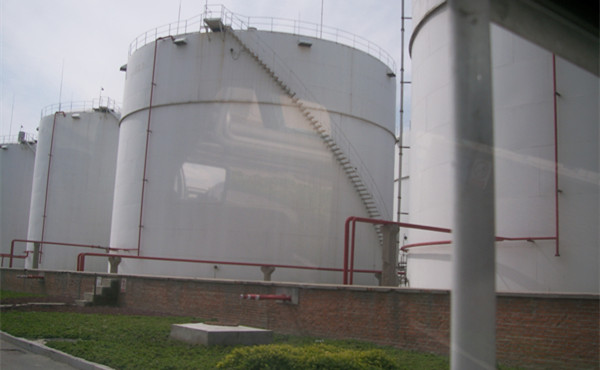Fixed oil storage tanks are a common oil storage facility in the oil storage industry. Accurate measurement of the level of fixed oil storage tanks using radar level meters can effectively monitor the storage of oil and manage the supply of oil.
In this paper, we will introduce the characteristics of fixed oil storage tanks and give two actual measurement cases as examples.

A stationary oil storage tank is a container designed to store large quantities of petroleum or other liquid substances. It generally consists of a cylindrical or rectangular-shaped steel tank with an anti-corrosion layer to protect the purity of the stored material. Stationary tanks are usually located in petroleum storage areas, such as oil fields or refineries, and are characterized by the following features: Stationary tanks usually have a large capacity.
Due to the huge demand for liquid storage substances such as oil, tanks often need to have a capacity of several hundred to several thousand cubic meters or more.
This makes the tank can meet the large-scale oil storage needs, to protect the normal operation of the oil industry. Fixed oil storage tanks need to have good sealing and stability.
Stored oil and other liquid substances are usually volatile and flammable, so the tank must be able to effectively seal and maintain a good atmosphere inside the container.
At the same time, the stability of the tank is critical to avoid catastrophic accidents such as spills or overturning. Stationary oil storage tanks require accurate level measurement.
Accurate level measurement is essential for monitoring oil storage conditions, safety management, and efficient dispatch of oil supplies.
In this regard, radar level meters have become a reliable and commonly used measurement method.

As an example, the first practical measurement case was a stationary storage tank located in an oil field. The tank has a capacity of 1,000 cubic meters and is used to store crude oil.
Since the stationary tank is located in an open area, it is susceptible to changing climatic factors. In order to accurately measure the oil level in the tank, a radar level meter was installed on top of the tank.
Due to the long range of the radar level meter and its strong immunity to interference, accurate measurements are guaranteed even under extreme weather conditions, such as heavy rain, blizzards, or scorching sun.
The second practical measurement example is a stationary storage tank located in an oil refinery.
The tank has a very large capacity of 100,000 cubic meters and is used to store a wide range of petrochemical products. In this case, the radar level meter not only needed to measure the total level of the oil products but also needed to monitor the levels of different components separately.
By installing multiple radar level meters at different heights of the stationary storage tank, the location of each liquid level in the tank can be monitored in real-time, allowing for effective management and scheduling of petrochemical product supply.

As an important facility in the petroleum storage industry, fixed oil storage tanks need to accurately measure liquid levels to ensure safe management and oil supply.
The radar level meter has become a reliable and commonly used measurement tool by virtue of its long-distance measurement, anti-interference ability, and other characteristics.
Through the introduction of two actual measurement cases, we can see the application value and importance of radar level meters in fixed oil storage tank level measurement.
